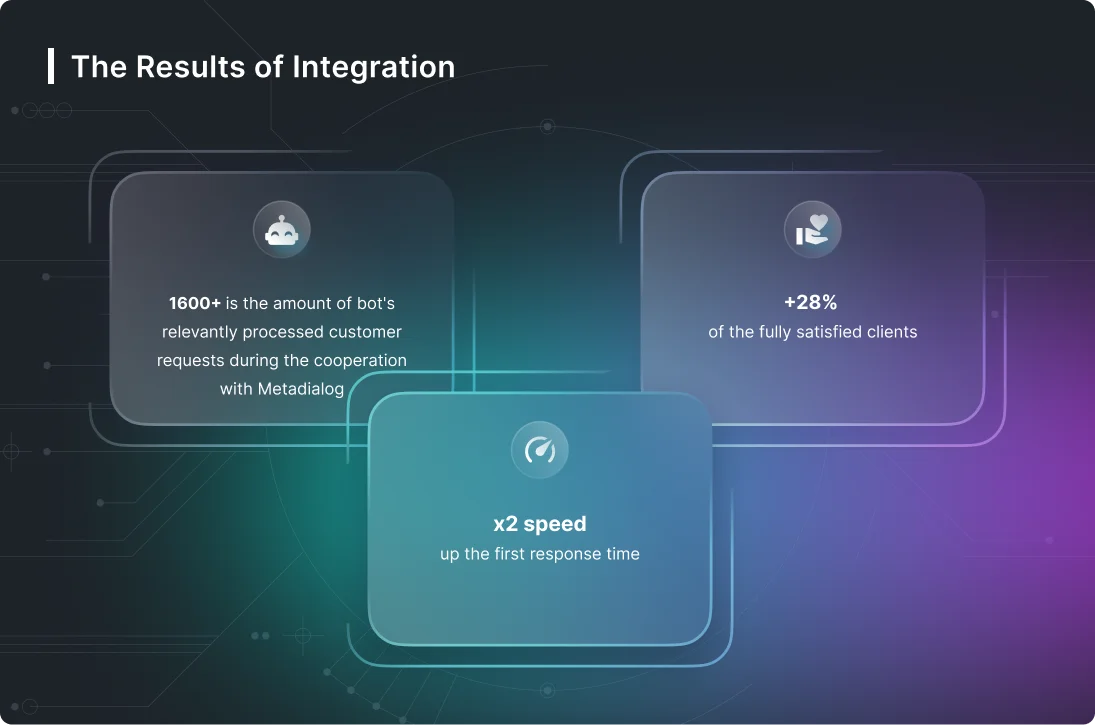Transform Search with AI-Driven Image Recognition Marketing Analytics

Artificial intelligence based image recognition system
In their publication “Receptive fields of single neurons in the cat’s striate cortex” Hubel and Wiesel described the key response properties of visual neurons and how cats’ visual experiences shape cortical architecture. This principle is still the core principle behind deep learning technology used in computer-based image recognition. In general, deep learning architectures suitable for image recognition are based on variations of convolutional neural networks (CNNs). A lot of researchers publish papers describing their successful machine learning projects related to image recognition, but it is still hard to implement them. The training procedure remains the same – feed the neural network with vast numbers of labeled images to train it to differ one object from another.
Outsourcing is a great way to get the job done while paying only a small fraction of the cost of training an in-house labeling team. As with many tasks that rely on human intuition and experimentation, however, someone eventually asked if a machine could do it better. Neural architecture search (NAS) uses optimization techniques to automate the process of neural network design. Given a goal (e.g model accuracy) and constraints (network size or runtime), these methods rearrange composible blocks of layers to form new architectures never before tested.
How can we prevent bias in machine learning models?
Visual search uses features learned from a deep neural network to develop efficient and scalable methods for image retrieval. The goal of visual search is to perform content-based retrieval of images for image recognition online applications. After 2010, developments in image recognition and object detection really took off. By then, the limit of computer storage was no longer holding back the development of machine learning algorithms. These algorithms are designed to sift through visual data and perform complex computations to identify and classify objects in images. One commonly used image recognition algorithm is the Convolutional Neural Network (CNN).

A key moment in this evolution occurred in 2006 when Fei-Fei Li (then Princeton Alumni, today Professor of Computer Science at Stanford) decided to found Imagenet. At the time, Li was struggling with a number of obstacles in her machine learning research, including the problem of overfitting. Overfitting refers to a model in which anomalies are learned from a limited data set. The danger here is that the model may remember noise instead of the relevant features. However, because image recognition systems can only recognise patterns based on what has already been seen and trained, this can result in unreliable performance for currently unknown data. The opposite principle, underfitting, causes an over-generalisation and fails to distinguish correct patterns between data.
What’s the Difference Between Image Classification & Object Detection?
These systems can capture customer demographics, emotions, and buying patterns, enabling retailers to personalize their marketing strategies and improve customer experiences. Google, Facebook, Microsoft, Apple and Pinterest are among the many companies investing significant resources and research into image recognition and related applications. Privacy concerns over image recognition and similar technologies are controversial, as these companies can pull a large volume of data from user photos uploaded to their social media platforms. An example of image recognition applications for visual search is Google Lens. If you ask the Google Assistant what item you are pointing at, you will not only get an answer, but also suggestions about local florists. Restaurants or cafes are also recognized and more information is displayed, such as rating, address and opening hours.
As the layers are interconnected, each layer depends on the results of the Therefore, a huge dataset is essential to train a neural network so that the deep learning system leans to imitate the human reasoning process and continues to learn. Artificial Intelligence-based image recognition technology can be used to identify relevant Creators for a marketing campaign.
This specific task uses different techniques to copy the way the human visual cortex works. These various methods take an image or a set of many images input into a neural network. They then output zones usually delimited by rectangles with labels that respectively define the location and the category of the objects in the image. Now that you’ve learned a thing or two about classification, you’re ready to navigate your own datasets. Understanding the different approaches to data labeling and classification, whether manual or automated, is the first step in building a successful model. Utilizing supervised learning to have full agency over your labels works well for some projects, while implementing unsupervised learning is better for others.
- Not many companies have skilled image recognition experts or would want to invest in an in-house computer vision engineering team.
- Every iteration of simulations or tests provides engineers with new learning on how to best refine their design, based on complex goals and constraints.
- We help enterprises and public sector organizations transform unstructured images, video, text, and audio data into structured data, significantly faster and more accurately than humans would be able to do on their own.
- At the time, Li was struggling with a number of obstacles in her machine learning research, including the problem of overfitting.
- With the rise of smartphones and high-resolution cameras, the number of generated digital images and videos has skyrocketed.
- As a result your solution will create a smart neural network algorithm able to perform precise object classification.
Image recognition tools, like the ones listed above, are just starting to become prominent on the market, and will yet rise to their true potential, power, and impact. Only time will tell how necessary they will become in marketing, healthcare, security, and everyone’s daily lives. Seamlessly integrating our API is quick and easy, and if you have questions, there are real people here to help. So start today; complete the contact form and our team will get straight back to you. Here are just a few examples of where image recognition is likely to change the way we work and play.
The inputs of CNN are not fed with the complete numerical values of the image. Instead, the complete image is divided into a number of small sets with each set itself acting as an image. Encountering different entities of the visual world and distinguishing with ease is a no challenge to us. We will discuss how image recognition works and what technologies are used to make it smarter a little bit later, and now let’s talk about image recognition in comparison with other related terms. If you will like to know everything about how image recognition works with links to more useful and practical resources, visit the Image Recognition Guide linked below. We modified the code so that it could give us the top 10 predictions and also the image we supplied to the model along with the predictions.
Image recognition technology has transformed the way we process and analyze digital images and videos, making it possible to identify objects, diagnose diseases, and automate workflows accurately and efficiently. Nanonets is a leading provider of custom image recognition solutions, enabling businesses to leverage this technology to improve their operations and enhance customer experiences. This technology identifies various digital images, objects, videos, logos, attributes, people, places and buildings. It uses artificial intelligence (AI) and machine learning (ML) algorithms for classification, segmentation, detection as well as tagging images.
Protect against pirated content
GANs have shown promising results in generating synthetic training data, boosting the performance of image recognition models by training them on more diverse and representative datasets. Building a diverse and comprehensive training dataset involves manually labeling images with appropriate class labels. This process allows the model to learn the unique features and characteristics of each class, enabling accurate recognition and classification.
Most of the time, it is used to show the Police or the Insurance Company that a thief indeed broke into the house and robbed something. On another note, CCTV cameras are more and more installed in big cities to spot incivilities and vandalism for instance. CCTV camera devices are also used by stores to highlight shoplifters in actions and provide the Police authorities with proof of the felony. Thanks to the rise of smartphones, together with social media, images have taken the lead in terms of digital content.
Loading and Displaying Images in Google Colab: A Guide with OpenCV, PIL, and Matplotlib
The technology is also used by traffic police officers to detect people disobeying traffic laws, such as using mobile phones while driving, not wearing seat belts, or exceeding speed limit. This is why many e-commerce sites and applications are offering customers the ability to search using images. Image recognition includes different methods of gathering, processing, and analyzing data from the real world. As the data is high-dimensional, it creates numerical and symbolic information in the form of decisions. Imagga’s Auto-tagging API is used to automatically tag all photos from the Unsplash website. Providing relevant tags for the photo content is one of the most important and challenging tasks for every photography site offering huge amount of image content.
Compared to other AI Solutions categories, Image Recognition Software is more concentrated in terms of top 3 companies’ share of search queries. Top 3 companies receive 99%, 21.0% more than the average of search queries in this area. Picture recognition is also actively used by Twitter, LinkedIn, Pinterest and many more. And what’s more exciting, it can help social media to increase user engagement and improve advertising. The image we pass to the model (in this case, aeroplane.jpg) is stored in a variable called imgp. Automatically detect consumer products in photos and find them in your e-commerce store.
Khosla-backed HealthifyMe introduces AI-powered image recognition for Indian food – TechCrunch
Khosla-backed HealthifyMe introduces AI-powered image recognition for Indian food.
Posted: Thu, 21 Sep 2023 07:00:00 GMT [source]
In his thesis he described the processes that had to be gone through to convert a 2D structure to a 3D one and how a 3D representation could subsequently be converted to a 2D one. The processes described by Lawrence proved to be an excellent starting point for later research into computer-controlled 3D systems and image recognition. The most obvious AI image recognition examples are Google Photos or Facebook. These powerful engines are capable of analyzing just a couple of photos to recognize a person (or even a pet).
Read more about https://www.metadialog.com/ here.

